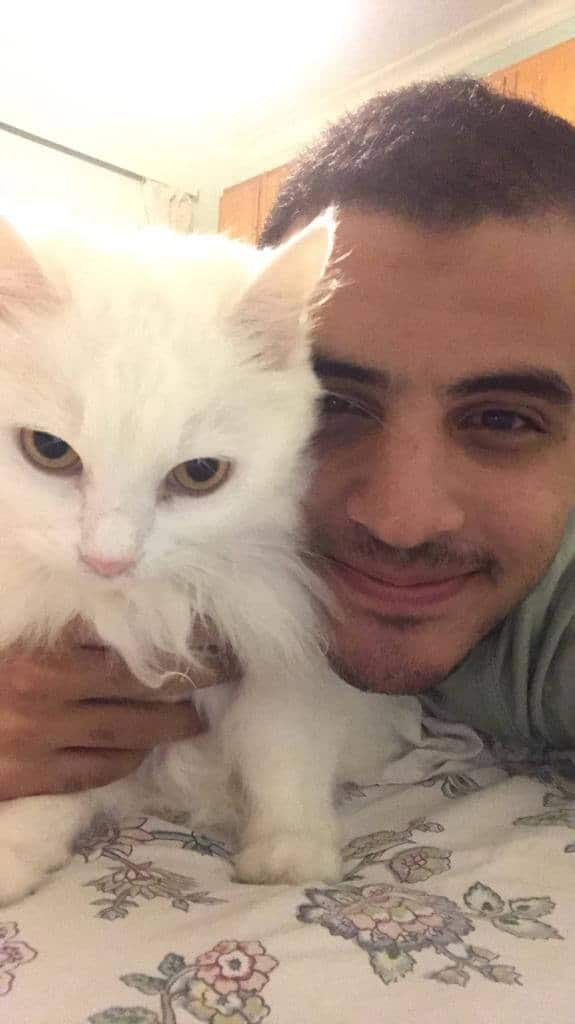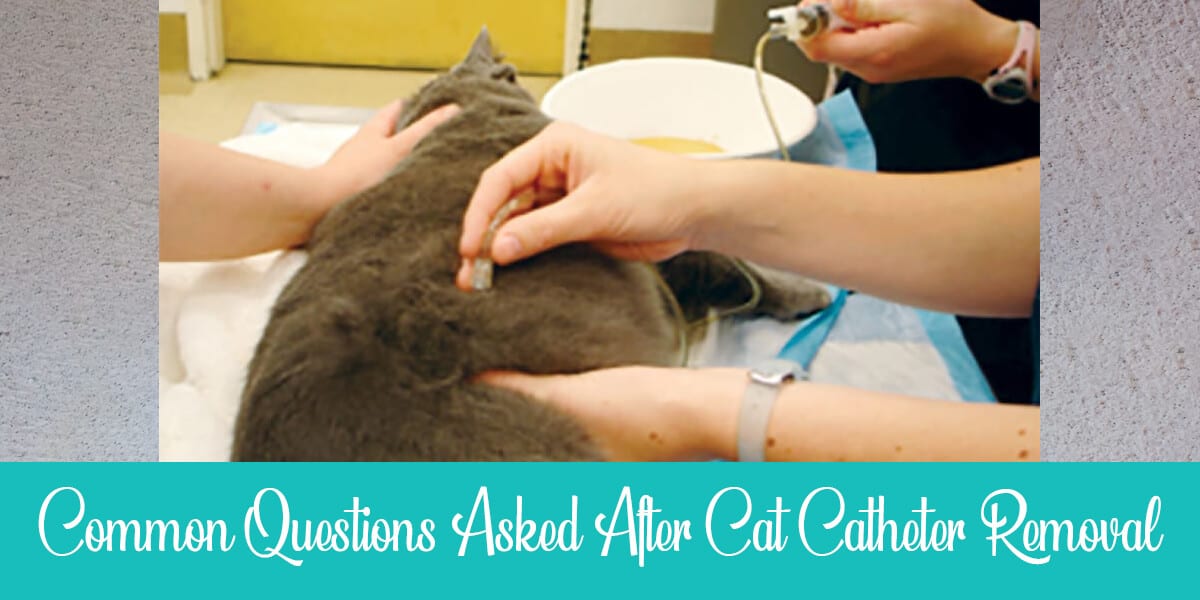Our feline friends are amazing creatures, but while they can be a bit aloof or hyperactive they’re going to have a hard time telling us that they need to go to the doctor.
That’s why we need to keep a close eye on their behavior and see if there are sudden changes that might require medical attention.
One such issue is “urinary blockage” or “urethral obstruction,” which, unfortunately, is a common problem, so much so that it accounted for 10% of the cases that needed to go to emergency vet clinics, according to reports from 2016.
With that said, this post attempts to discuss some of the most common recovery questions with regard to the removal of the cat’s catheter.
Table of Contents
Cat Catheter Removed (Common Recovery Questions)
- My cat leaks outside the litter box and there’s blood in the urine, what to do? These are common occurrences due to urethral inflammation and will go away with time.
- What do I do if my cat is still not able to urinate and stopped eating? You should contact a vet ASAP.
- How do I make sure this doesn’t happen again? Offer your cat healthy food, clean water, and a stress-free living environment.
How to Spot If Your Cat Has Urinary Blockage?
A prominent sign that will help you check if your cat has trouble passing urine is if you notice it going to its litter box several times and even taking the peeing position but not urinating at all.
What Is the Cause of the Urinary Blockage?
There are many reasons that could be behind your cat’s urinary blockage.
It could be mucus, stones, or crystals that have developed over time, which have led them to become similar to a plug that blocks the urine within the cat’s bladder.
This, of course, makes the liquid build up inside the organ, which is very dangerous and even life-threatening.
If not treated immediately, the toxins will start to make their way into the feline’s bloodstream, leading to death within three to six days.
Taking that into consideration, a visit to a vet is imperative.
What to Expect at the Vet?
The vet will apply gentle pressure on the cat’s bladder to check if it’s filled with excess urine and assess if a catheter is required.
What’s a catheter, you might be wondering?
Well, it’s a flexible tube that is inserted through the urethral opening of the cat after it’s sedated so that one of two processes can be administered.
Either the catheter is pushed through the obstruction and the urine is extracted, or a solution is pumped into the bladder through the catheter to the obstruction to where it could be dissolved.
How Long Will the Cat Have the Catheter?
Your furry friend will, unfortunately, have to stay at the vet.
During its stay, it’ll be monitored and will receive all of the required medication and fluids. At the same time, the cat’s body will continue to relieve the urine and flush out any toxins.
This will take place for at least a couple of days.
Users Also Read: Cat Sides Sunken After Spaying
What Happens After the Catheter Is Removed?
The cat is then released to its owner. Moving on to the recovery phase, however, several things need to be considered.
- The cat needs to be observed for the next two weeks to make sure no re-obstruction occurs.
- The cat needs to continue to wear its cone around its neck so as not to lick the wound or area where the catheter was placed. This is to prevent infections or further pain and irritation.
- Cats can start to “leak” or urinate with some blood, which is a temporary problem. It’s caused due to the insertion of the catheter in the first place and the inflammation of the urethra; both issues should go away on their own.
- Cat owners should follow the vet’s dietary plan for the furry feline and administer any medication to continue treatment.
How Does the Dietary Plan Affect the Cat’s Recovery?
A new dietary plan, in the long term, keeps the cat from having the same issue again.
Thankfully, there are several kinds of urinary-focused supplements and dry food available that will help change the pH (acidity) level of the cat’s urine to prevent crystals from forming.
What Kind of Medication Will Be Prescribed?
Vets most likely will prescribe certain medications for the kitty during its recovery phase; most of which help heal the urethra, along with antibiotics to fight off infections.
Some of the medications will predominantly focus on the urethral muscles to help the cat urinate effectively, whereas the rest will act as a pain reliever.
How Long Will It Take for the Cat to Recover?
It will take a few weeks for the cat to fully heal. Slowly but surely, the urethra will recover and the cat will be able to urinate normally again without the need for medication.
Is There a Reason to Go to the Vet After the Catheter’s Removal?
While the cat is in the recovery phase, there are still a few signs to keep an eye out for.
One sign, for example, is the cat not being able to urinate, which might be yet another blockage.
If the cat starts to show any loss of appetite or starts vomiting during the recovery stage, you, as the owner, need to contact the vet as soon as possible.
How Can I Prevent Urinary Blockage in Cats?
Here are a few simple tips that will help keep urethral obstruction away from your cat:
Hydration, Hydration, Hydration!
Make sure there are many sources of fresh clean water around the house for your pet feline. Proper Hydration will keep the urine diluted and prevent the creation of crystals and stones.
Happy Cat = Healthy Cat
Stress plays a big role in the cat’s health. That being said, you need to make sure your cat feels safe and that it doesn’t need to fight for resources with other cats.
Also, make sure your cat is active. You can implement some scratching posts, as well as some high platforms for climbing, to keep your cat on its feet.
Food Plays a Big Role
Cats love their food, and unfortunately, convenient dry food isn’t the best option for your cat. An organic, well-rounded meal can do magic for your cat.
Be sure to ask your vet about the best foods for your cat so that it gets exactly what its tiny body needs and so pH levels are optimal.
Nobody Likes a Dirty Bathroom
Cats like everything to be clean. They’re even licking themselves all the time, after all!
The same goes for their litter box. They won’t even do “their business” if they find it full and dirty, which might lead to them holding it in, and that causes all kinds of problems.
That said, get an extra box, just in case, and clean the litter box regularly.
FAQs
Why is My cat peeing everywhere after catheter removal?
This is probably due to the muscle relaxant medications that are prescribed after the removal of the catheter. You can expect this behavior to stop as soon as the medications are stopped and he’s healed. However, you shouldn’t worry as this means that your cat is no longer blocked and will get back to it’s normal peeing habits after healing.
Wrapping Up
Keep an eye out for any sudden behavioral changes in your cat, including its litter box habits, as it could be a warning sign for a life-threatening disease.
If the cat has trouble urinating, a visit to the vet is important to tackle the issue early on.
After the catheter procedure, and while in the recovery phase, it’s still vital to make sure the kitty is healing properly to avoid any further complications.
Moving forward, make sure the cat is placed in a stress-free environment with plenty of food and clean water to prevent this from happening in the future.

I’ve been living with cats since 2008 and I can confidently say I have more feline friends than humans lol. I currently live with 5 cats in different life stages; two of them are less than one year old, one is 2-ish years old and the oldest two are 9-ish years old. I’ve developed a strong bond with cats over the years and I’m eager to share my experience through this blog. You can learn more about my cats here.

